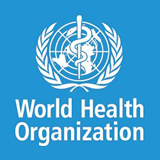
Objective
To assess the socioeconomic, geographical and demographic inequities in the use of postnatal health-care services in low- and middle-income countries.
Methods
We searched Medline, Embase and Cochrane Central databases and grey literature for experimental, quasi-experimental and observational studies that had been conducted in low- and middle-income countries. We summarized the relevant studies qualitatively and performed meta-analyses of the use of postnatal care services according to selected indicators of socioeconomic status and residence in an urban or rural setting.
Findings
A total of 36 studies were included in the narrative synthesis and 10 of them were used for the meta-analyses. Compared with women in the lowest quintile of socioeconomic status, the pooled odds ratios for use of postnatal care by women in the second, third, fourth and fifth quintiles were: 1.14 (95% confidence interval, CI : 0.96–1.34), 1.32 (95% CI: 1.12–1.55), 1.60 (95% CI: 1.30–1.98) and 2.27 (95% CI: 1.75–2.93) respectively. Compared to women living in rural settings, the pooled odds ratio for the use of postnatal care by women living in urban settings was 1.36 (95% CI: 1.01–1.81). A qualitative assessment of the relevant published data also indicated that use of postnatal care services increased with increasing level of education.
Conclusion
In low- and middle-income countries, use of postnatal care services remains highly inequitable and varies markedly with socioeconomic status and between urban and rural residents.